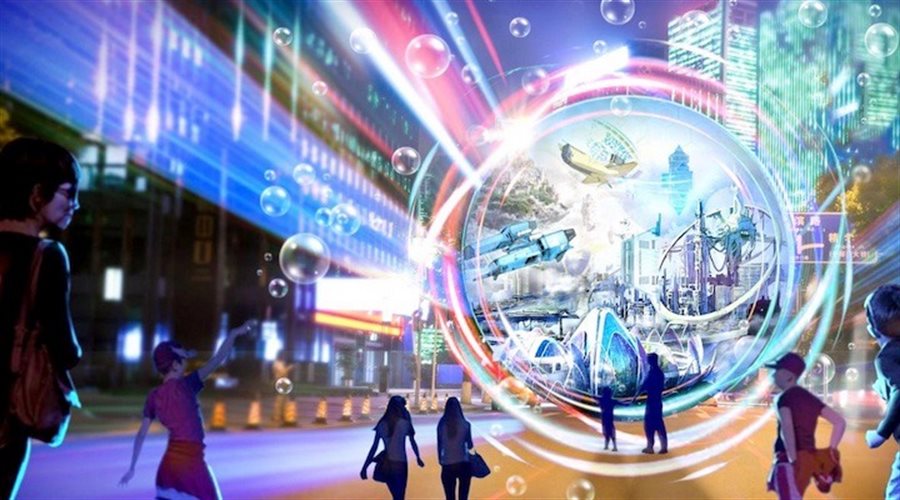#crypto #internet #metaverse #SiFi #immigration #freedom #wealth #tokenomics #P2E #blockchain #digital #assets #DeFi #bitcoin #ether #knights #knightsbridge #DOA
$BTCUSD $KNIGHTSUSD
“The US is the world’s largest destination for immigration, much of its lore is built on a promise of freedom“– Paul Ebeling
There are many forms of freedom, and all hotly debated in political spheres. However, the version that most often gets people to actually pick up and move beyond being forced by wars or persecution is economic. Economic freedom entails a complex mix of earning potential, ownership, mobility and self-determination.
Immigration to the metaverses, with numbers to rival the US, will build on the same ideals, which all pair very well with blockchain and digital assets. For this to work sound tokenomics is Key.
The metaverse already exists.
Most aspects of a universal digital experience that Neal Stephenson envisioned in his 1992 novel, ‘Snow Crash‘ where ‘metaverse’ was coined, can be found on the internet itself. All around the world software and hardware devices talk seamlessly to each other and immersive multiplayer games act as popular entry points.
Game iterations such as Second Life, World of Warcraft or Minecraft have proven that digital worlds are attractive and can draw critical mass. Their popularity has made the trade of game accounts, characters or other accessories an inevitable economic evolution, even if controversial at times or even against the games’ own terms of service.
CryptoKitties, a game where players buy, breed and sell virtual cats, became the 1st widely known blockchain-based game in Y 2017, formalizing play-to-earn (P2E) economics.
Since then, millions of people have joined P2E platforms, such as Alien Worlds, Decentraland or Axie Infinity. Here they play, earn and have the added freedom to take assets beyond the game’s boundaries.
Currently, in-game tokens can be traded on decentralized as well centralized exchanges, thereby linking micro-economies to a larger crypto liquidity pool. But that is just the tip. Work on cross-chain interoperability, where tokens and other virtual assets including identities can be transported across games and chains is in early stages but we can already see why this is set to be a game-changer.
Interoperability is Key to opening a virtual parallel to immigration. It represents the draw of economic freedom and mobility.
Stories of people making a living with blockchain games attaining higher income than what they could earn locally are not hard to find. While the valuation of game assets may be minuscule compared to Bitcoin, they do not need to be astronomical to spark migration away from real-world jobs. Incomes only need to exceed local averages, which can be as little as $15 a day in emerging markets.
Metaverse immigrants may not leave home, but they will exit the local labor pool. And like non-virtual immigrants, odds are they will not return. That may or may not be problematic for local economies in terms of payroll tax or local consumption.
On the one hand, metaverse immigration could act as a brain drain. On the other, it could act as a magnet, attracting higher-paying jobs to new and diverse markets.
The internet makes online games universally accessible. But interoperability of digital assets – or the freedom to move them between games or environments – is what transforms a collection of walled gardens into something more singular. This is already possible with centralized crypto exchanges, but within the gaming world, such functionality is still a ways off. However, this is the direction.
And what is good for gamers could work for gig jobs too or even whole corporate structures. The VirusCasedemic demonstrated how much remote work, especially high-paying knowledge work can be done virtually. It is not a long leap then from video games to virtual workplaces. Or even paychecks, at least 3 US city mayors have asked to receive pay in Bitcoin.
Once livelihoods become embedded in the metaverse, economic lives can follow. Typically, economic migrants are not politically recognized. That is, fleeing poverty does not afford the same rights of asylum that people displaced by war or persecution receive. Still, economic migration is massive, and if the metaverse can absorb some of that, then we can see digital assets as an avenue for local wealth generation, which can be a powerful counter to tough issues around migration.
But having a draw is not enough. Keeping virtual migrants or metagrants or metizens, just not metamates please engaged is Key. And that is where equitable tokenomics comes in.
Without getting into the weeds of gameplay, Axie Infinity’s token, Smooth Love Potion (SLP), soared in value during 1-H of Y 2021 before giving up all its gains. At the time of this writing, SLP is well below its high of about $0.40, and an abundance of supply seems to have been the cause.
As of 10 February 2022, game mechanics changed to taper token supply. The effect, though modest, was immediate. Announcement of the governance change correlated with a doubling of token value from about $0.01 to $0.02 over 7-8 February 2022. SLP prices continued up after the reduced-reward scheme went into force.
Along with the declining SLP value, active user numbers for the game also started to slip. Without reward, digital immigrants will not stick around. Unlike physical immigration, the digital kind is easy to undo or redo to a new platform.
The Big Q: Why does Bitcoin work?
The Big A: Because miners or players if you think of the game parallel receive a reward (Bitcoin) for their work or play (problem-solving), which in turn keeps the blockchain ledger functioning. It is an efficient and decentralized balance of work/reward.
The Axie Infinity example shows a centralized authority changing rules to achieve an end goal. Bitcoin’s governance, on the other hand, is built-in, automated and any change requires thousands of participants to reach consensus.
That decentralized architecture has made Bitcoin secure, offering permanency, immutability and predictability. This has been Key to its success and rules-based value has attracted some of the world’s largest investment banks.
Driving sustained metaverse migration will need similar predictability and reliability.
As the Axie Infinity example shows, blockchain projects have to manage token supply. If supply increases while demand slips or holds steady, a fall in value follows. So, whatever governs that will be Key.
Bitcoin’s monetary policy is automated, it halves the number of new coins that can be mined with each block roughly every 4 yrs until maximum supply is reached projected to occur in Y 2140.
The other big cryptocurrency, Ethereum, lacks a hard cap and keeps minting new coins to incentivize validators or stakeholders to maintain the ecosystem. This approach has so far also been successful too.
The Key thing to address is that price crashes drive away users while deflationary processes can maintain long-term growth. Sound tokenomic principles are therefore critical for creating functional markets.
The interoperability that will link metaverse applications and build out the web 3.0 everyone is talking about still depends on developers cracking code to figure out cross-chain functionality. But the sustainability of web 3.0’s micro-economies hinges just as much on good tokenomics.
Decentralized finance (DeFi), with smart contracts and other structures, give us a glimpse into that future. DeFi already represents hundreds of billions of dollars in projects, which is larger than the GDP of about 150 different countries. Experiments here are ongoing but if you want to understand the future of earning and owning in the metaverse, this is an important place to look.
The Key to growing the metaverse past a science fiction vision is not sticky intellectual property, unique APIs or even grand notions of freedom. They are part of it, but the fair and equitable application of economic incentive, which is Key to earning, ownership and even self-determination, will be foundational. That is tokenomics!
Have a happy, prosperous week, Keep the Faith!









